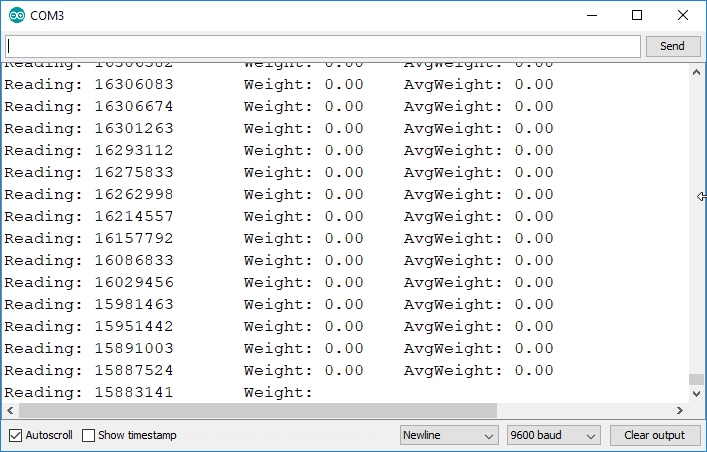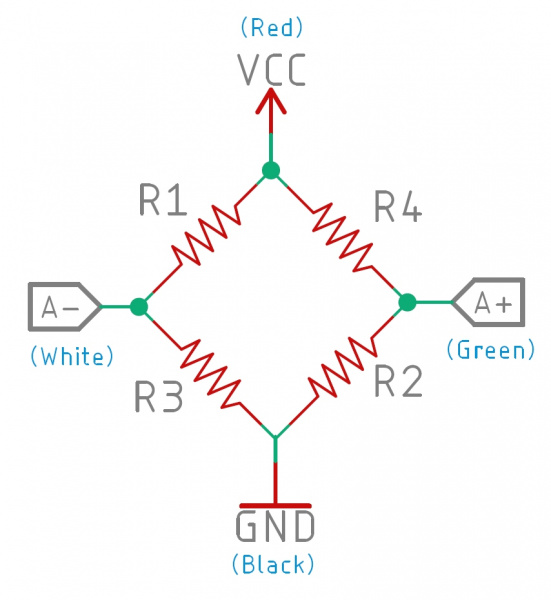Qwiic Scale Hookup Guide
FAQ and Troubleshooting
The Full Scale Example Never Changes from Zero.
Are you seeing something like this? Where the readings are changing but the weight doesn't?
If you see the readings are decreasing when you press on the scale, then the A+/A- wires are probably backwards. Because the readings go down with more weight, the displayed weight will never go above zero. Try reversing the white and green wires.
The Values Decreasing When I Push Down on the Load Cell! Help!
A+/A- wires are probably backwards. Try reversing the white and green wires.
Example1 Displays Constant Values ~1000 / ~8,000,000 / ~ 16,000,000 / The Scale Doesn’t Work
More than likely you have a wire that is not making contact. Be sure to insert the stripped wire into the spring terminal but not too far. If the terminal is ‘pinching’ on the insulation rather than the wire then it will not make an electrical connection. Press down on the arm and pull the wire out a few millimeters.
Can I Measure 0.001 Grams?
Probably not. Really high precision scales don't use load cells for a variety of reasons. Check out 'weight scale elements' which are basically a balance scale that uses an electromagnet and a PID loop.
We were able to reliably and accurately measure a change of 5 grams on a 10kg max load cell, or 0.05%. So on a 200kg load cell that’s 100 grams. On a smaller 100g max load cell you may be able to reliably measure down to 50 milligrams.
Here are some things to consider as you get into finer accuracy measurements:
- Temperature variations in the load cell will change the zero offset and known weight values. You’ll need to recharacterize your scale if the temperature swings more than a couple degrees Celsius.
- For milli and micro gram readings, professional scales will often have a air cover reducing the effects of small currents in the environment.
- Vibrations from HVAC equipment, trains, etc can affect readings.
The Wire Colors on My Load Cell Don’t Match Anything Here!
Never fear. Disconnect the wires from Qwiic Scale and use a multimeter to measure the resistance between each wire. Take notes as you go. Start with one wire and find the lowest resistance to two others. You now know this wire falls in between the other two in the wheatstone bridge shown below.
Once you have the pairs of wires identified (possible VCC/GND pair and A+/A- pair) then attach those pairs to Qwiic Scale. If the readings go down when you press on the scale, then you’ve got A+/A- reversed. If the scale doesn’t work at all then swap the pairs so that your assumed VCC/GND move into A+/A- and vice versa.
My 1000kg Load Cell is Acting Oddly.
By default, the library sets the gain to the maximum of 128 because most of our users are measuring smaller load cells. If you’re measuring very large weights, you may need to reduce the gain by using the following command:
language:c
myScale.setGain(NAU7802_GAIN_16);
Gains of 1, 2, 4, 8, 16, 32, 64, and 128 are available.
How Much Does a Can of Soda Weigh?
I’m glad you asked because it’s fascinating that it changes between regular (394g) and diet (355.1g). Read all about it from the Virtual Chembook:

